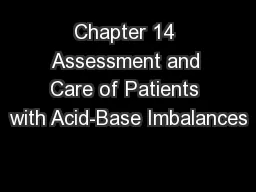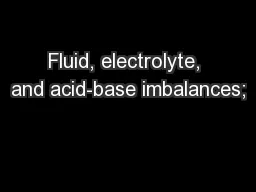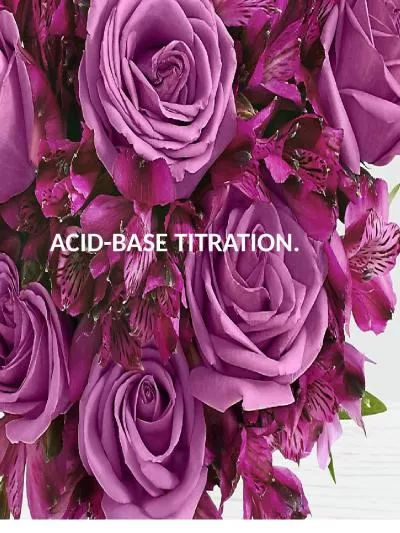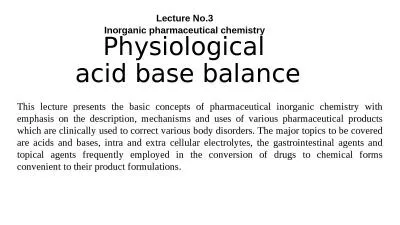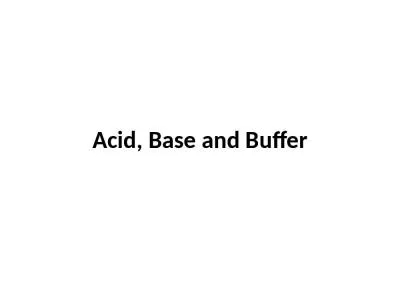PPT-Chapter 14 Assessment and Care of Patients with Acid-Base Imbalances
Author : lindy-dunigan | Published Date : 2018-09-26
Normal Blood pH Keeping pH within the normal range involves balancing acids and bases in body fluids Normal pH for arterial blood 735 to 745 Normal pH for venous
Presentation Embed Code
Download Presentation
Download Presentation The PPT/PDF document "Chapter 14 Assessment and Care of Patien..." is the property of its rightful owner. Permission is granted to download and print the materials on this website for personal, non-commercial use only, and to display it on your personal computer provided you do not modify the materials and that you retain all copyright notices contained in the materials. By downloading content from our website, you accept the terms of this agreement.
Chapter 14 Assessment and Care of Patients with Acid-Base Imbalances: Transcript
Download Rules Of Document
"Chapter 14 Assessment and Care of Patients with Acid-Base Imbalances"The content belongs to its owner. You may download and print it for personal use, without modification, and keep all copyright notices. By downloading, you agree to these terms.
Related Documents

